-
Protecting Your Eyes from UV Rays
The light that we get from the sun comes in the form of ultraviolet, or UV, rays. While the first sunny day of spring might improve your mood, exposure to these rays comes with implications for your eye care near Chicago. Talk to your eye doctor about how to keep your eyes healthy , and watch this video on protecting your eyes from UV rays.
Overexposure to UV rays can fade your carpets and furniture, burn your skin, and even damage your eyes. This is why you should do your best to protect yourself from overexposure when you spend time in the sun. Sunglasses can be effective, but you should choose a pair that blocks 100% of both UVA and UVB rays, so be sure to check the label. It’s also a good idea to wear a hat for extra protection. Keep in mind that UV rays can even damage your eyes on cloudy days.
-
May is Healthy Vision Month
Although you should practice proper eye care every day, May happens to be Healthy Vision Month. The purpose of this campaign is to raise awareness about the importance of eye health and teach people how they can keep their vision sharp for the rest of their lives. In order to stay on top of your eye health, you should know a little bit about your family history and what you might be susceptible to. Do your best to protect your vision when you’re out and about, and see your eye doctor in Chicago for routine checkups. May is Healthy Vision Month, so continue reading to learn about the principles it focuses on.
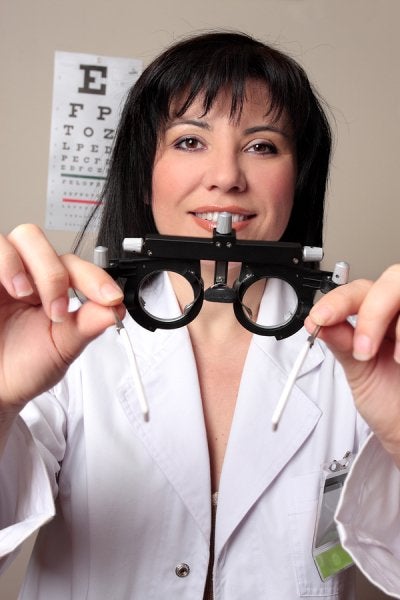
Know Your Family History
You are who you are thanks to nature and nurture, and both of these constructs play a role in your eyesight as well. Some of the traits that make you who you are will have been passed down through your bloodline. For this reason, it’s a good idea to know what kinds of health issues run in your family. Just like heart disease and bipolar disorder, eye conditions can be hereditary. Celebrate Healthy Vision Month by learning about your family’s eye health.
Protect Your Eyes
Your eye doctor wants the best for your eyes, but you need to do your part to keep your vision sharp. Overexposure to ultraviolet rays can have a negative impact on your vision and even lead to eye health issues. When you go outside, be sure to wear sunglasses that block out ultraviolet rays. It’s also a good idea to stay in the shade, and you can even wear a hat for extra coverage. The better you protect your eyes, the happier your eye doctor will be during your next visit.
See Your Eye Doctor
Proper eye health is a team effort, so you can’t handle it alone. Your ophthalmologist knows what’s best for your eyes, and he or she can screen you for diseases that you might not catch yourself. If you haven’t seen your eye doctor lately, take the opportunity to make an appointment during Healthy Vision Month.
-
Tips for Avoiding Common Eye Injuries in Sports
Sports are a great way to get physically fit and connect with peers, but these activities are also risky. Thousands of sports-related eye injuries are reported each year in the U.S. Many of these are preventable. During Sports Eye Safety Month this April, talk to an eye doctor in Chicago about protecting your vision. Your ophthalmologist can help you learn about the potential risks of your favorite sports and how to reduce these risks.
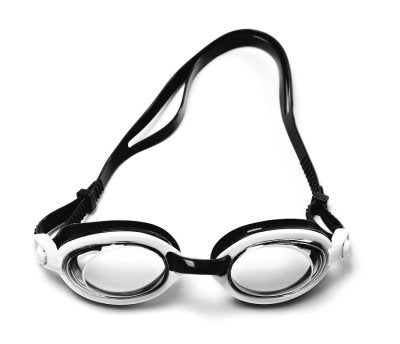
Get Informed About the Risks
Ophthalmologists recognize low risk, high risk, and very high risk categories of sports. A low-risk sport is one that involves no airborne objects, no objects that are swung such as racquets, and no bodily collisions. Some common examples are swimming, cycling, and track and field. High-risk sports do involve those risk factors. A few examples are baseball, hockey, football, and fencing. A very high-risk sport is one that involves risk factors of eye injuries and does not require participants to wear eye protection, such as boxing and martial arts. When you see an eye care professional, he or she can advise you as to the types of eye injuries that might occur with your chosen sport. Most sports-related injuries are caused by blunt force trauma. Penetrating injuries are less common in sports, but cannot be completely ruled out. There has been at least one instance of a fishing hook penetrating an eye .
Choose Protective Eyewear
Protective eyewear should always be worn for high-risk and very high-risk sports, even if the sports organization does not require it. It isn’t wise to rely solely on face masks as a means to prevent eye injuries, since sports equipment or a teammate’s fingers could slip through the mask. Protective eyewear should be specific to the sport you’ve chosen. For example, your eye doctor will recommend sports goggles with polycarbonate lenses for playing basketball and racquet sports.
Encourage Compliance in Children
Some children may resist wearing protective eyewear, especially if their teammates aren’t wearing it or if they feel self-conscious about their looks. To encourage compliance, parents can explain what might happen if a child fails to wear protective eyewear. Older children may be told that, if they wear regular eyeglasses, these can shatter and penetrate the eyeball. Parents can convince younger children to protect their eyes by having them shut their eyes and try to perform common tasks without the benefit of sight.
-
What to Expect from Cataract Surgery
Cataracts are common among older adults. These are areas of clouding on the lens of the eye. If you experience blurry vision, worsening night vision, and halos around light sources, your ophthalmologist will evaluate you for cataracts. It can be alarming to be diagnosed with condition that affects something as precious as your vision, but there is an effective treatment option available: cataract surgery . Discuss what you can expect from the procedure with your cataract surgeon serving Chicago.
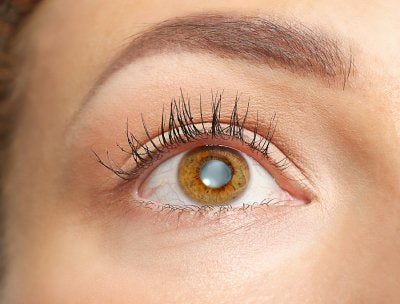
Preparing for Cataract Surgery
It may not be necessary to have the procedure right away. Many patients find that their symptoms are barely noticeable. When cataracts grow larger and begin interfering with daily life, your cataract surgeon will help you prepare for the procedure. First, you’ll have a thorough eye exam to measure your eye’s size and shape. You’ll likely be asked not to consume food or liquids for 12 hours before your appointment. It will be necessary to have someone else drive you home from the optical center. You’ll be awake during the procedure, but you won’t be able to feel anything because the cataract surgeon will numb the eye. Some people find it helpful to use a prescribed sedative to help them relax.
Undergoing Cataract Surgery
During this procedure, the ophthalmologist removes the affected lens and implants an artificial replacement, which is known as an intraocular lens (IOL). Your surgeon may perform laser-assisted cataract surgery, which relies on a precise laser to make the incision. The lens is broken up and removed through the incision. Then, the new lens is placed. Stitches usually aren’t required because the incision is tiny. The new lens restores both near and distance vision.
Recovering from Cataract Surgery
Immediately after the procedure, your surgeon will place a protective patch over the treated eye. You’ll rest for about 30 minutes to an hour before a responsible adult can drive you home. Follow your surgeon’s instructions for your recovery, which will include using the eye shield for several hours after the surgery and while sleeping. In addition, your surgeon may ask you to take the following precautions:
- Rest quietly for a few days
- Avoid driving until your eye doctor clears you
- Use eye drops as prescribed
- Avoid rubbing or applying any pressure to the eye
- Go to a follow-up appointment
- Call your eye doctor if side effects develop
It’s normal to experience some discomfort, which should go away within a few days. Expect complete healing in four to eight weeks.
-
Eye Protection for Tennis Players
If you play tennis or plan to learn how, it’s time to schedule an appointment with an ophthalmologist. At an optical center in Chicago, you can learn about the specific risks associated with tennis, including eye injuries that may cause vision loss. Your ophthalmologist can recommend protective eyewear specifically for tennis. He or she will ensure that your eyewear fits you properly for maximum protection.
For more tips on eye care and injury prevention, watch this video. The eye doctor featured here explains that the polycarbonate lenses found in protective eyewear can block projectiles such as tennis balls, even when these objects are traveling at up to 90 miles per hour. She also discusses the importance of ultraviolet (UV) protection to guard against cataracts, lesions, and tumors.
-
The Link Between Diabetes and Glaucoma
After you have been diagnosed with diabetes, your ophthalmologist will be an important member of your diabetes care team. This is because your disease places you at risk of eye health complications, including glaucoma. People with diabetes are thought to be twice as likely to develop open-angle glaucoma compared to non-diabetics. Interestingly, people who already have open-angle glaucoma are at a higher risk of developing type 2 diabetes compared to people without glaucoma. At an optical center in Chicago , diabetic patients can undergo testing for glaucoma. The sooner glaucoma is detected and treated, the better the outcome will be. Your eye doctor may ask you to return to the optical center for routine exams more frequently than patients without diabetes.
In addition to getting your vision checked regularly, you can protect your eye health and systemic health by following your primary care physician’s diabetes management guidelines. You may be asked to take oral medications or injected insulin to control your blood sugar levels. Lifestyle changes like careful meal planning and regular exercising are other essential ways to reduce the risk of diabetes-related complications like glaucoma.
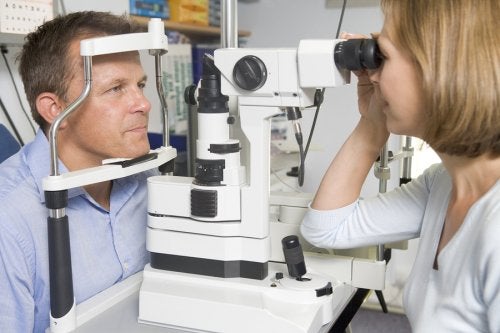
-
Choosing the Right Glasses for Your Face Shape
If you wear glasses for vision correction , then you may realize how great an impact your frames can have on your appearance. Are you planning to see an ophthalmologist to get new eye glasses in Chicago? If so, then watch this video for tips on choosing glasses that complement your face shape before heading to the eye doctor.
Start by pulling your hair back and outlining your face by tracing it on a mirror. Then, determine if it most resembles a circle, heart, oval, diamond, square, or rectangle. If your face shape is a circle, then choose glasses that have strong, angular shapes which will add definition to your look. Conversely, a square face shape can be softened with glasses that have round frames. For heart-shaped faces, rimless frames can be ideal, and heavy or over embellished ones should be avoided.
-
The Importance of Diagnosing Glaucoma Early
When was the last time you visited an optical center in Chicago to have your eyes checked by an ophthalmologist? According to eye doctors, you should have your eyes examined every 2 to 4 years if you are under age 40. This rate increases to every 1 to 3 years from age 40 to 54, every 1 to 2 years for ages 55 to 64, and every 6 to 12 months for individuals ages 65 and older.
Diagnosing glaucoma early is an important part of eye care because this condition can result in permanent damage to your vision. Glaucoma is a group of eye disorders that cause progressive damage to the optic nerve. When left untreated, glaucoma can lead to permanent loss of vision and blindness.
Glaucoma causes increased pressure in the eye that damages the optic nerve and is the second-leading cause of blindness in the United States. When caught early, glaucoma can be treated to stop or slow the progression of damage to the eye and preserve the patient’s vision.
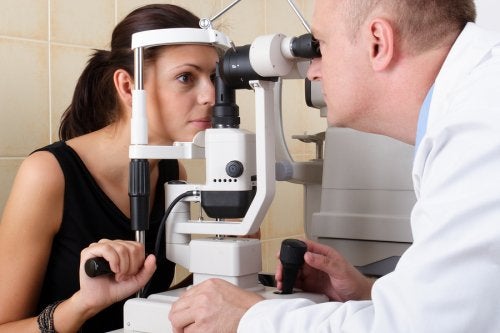
-
What You Can Do to Avoid Eye Injuries in the Workplace
Workplace incidents are a common cause of eyes injuries treated by ophthalmologists near Chicago . In fact, about 2,000 workplace eye injuries occur daily in the U.S., and most of these are caused by small, falling, or flying objects. To avoid being among these statistics, consider the following tips for avoiding eye injuries in the workplace:

Promote a Safe Work Environment
Creating an environment in which accidents become less likely is the first step towards reducing the chances of eye injuries. To do this, ensure that all tools and equipment are working properly and that all necessary safety features are functional and in use. Next, inspect the area for unstable objects and similar hazards and remove or repair these. Also, ensure that bystanders remain out of hazardous areas, and that staff members know how to use every tool correctly.
Check Your Worksite Regularly
Checking your workplace once isn’t sufficient for preventing injuries long-term, so schedule regular evaluations. Inspect your work areas and identify hazards from machinery, falling or moving objects, and other workers. After evaluating any safety hazards, take action to eliminate or minimize them.
Wear the Right Equipment
Most workplace eye injuries occur where the use of safety eyewear is not required or is optional, and many people end up having to visit an eye doctor because they chose not to wear protective eyewear or used it improperly. Start by selecting the right protective eyewear for your worksite. Then, always check that the eyewear is in good condition before each use. Finally, ensure that protective eyewear fits properly and stays securely in place while you work.
Adhere to Smart Safety Practices
Before removing your protective eye gear, you should shake, brush, or vacuum away any dust or debris that may have accumulated on your head, forehead, or hardhat. Also, never rub your eyes with dirty clothing or hands. Finally, clean your protective eyewear regularly. Following these steps is a smart way to practice good eye care and avoid a trip to an eye doctor because of an injury.
-
Answering Common Questions About Intraocular Implants
Are you planning to see an ophthalmologist about getting intraocular implants in Chicago ? If so, then you could benefit from knowing more about this type of eye surgery. Read on to learn the answers to common questions about intraocular implants.
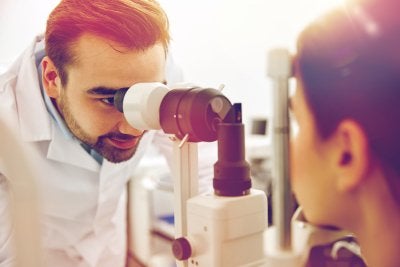
What are intraocular implants?
Sometimes referred to as intraocular lenses (IOLs), intraocular implants can be thought of as permanent contact lenses. However, instead of sitting on top of the cornea, an IOL is implanted in the eye and can be used to treat refractive errors or cataracts. An intraocular implant can replace your eye’s natural lens after it is removed during cataract surgery, or it can work with your eye’s natural lens to improve its focusing power and enhance your vision.
What are the benefits of intraocular implants?
Intraocular implants provide a solution for poor vision that can eliminate the need for wearing eyeglasses or contact lenses. IOLs offer great performance and excellent quality of vision along with stable and predictable results. Also, the procedure is simple, requiring just one operation through a microincision and no additional maintenance. Intraocular implants can address many levels of nearsightedness and can be removed later if needed.
What happens during intraocular implant surgery?
The procedure is usually performed on an outpatient basis, and your ophthalmologist will surgically place the lens in your eye. For cataract surgery, the clouded lens is removed, and then the IOL is put in place. The procedure takes only a short amount of time, and the full recovery period is usually about a month.
What is Visian ICL?
Visian ICL is the first intraocular implant of its kind to receive FDA approval for use in the United States. The ICL lens is made from Collamer, which is a soft and flexible material that provides unmatched biocompatibility. Visian ICL can be used to treat a wide range of refractive errors. If you have been turned down for LASIK and other surgical eye procedures, then ICL surgery may offer you a solution for improving your vision.
